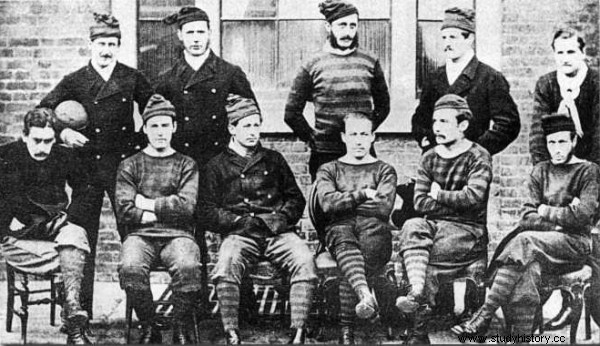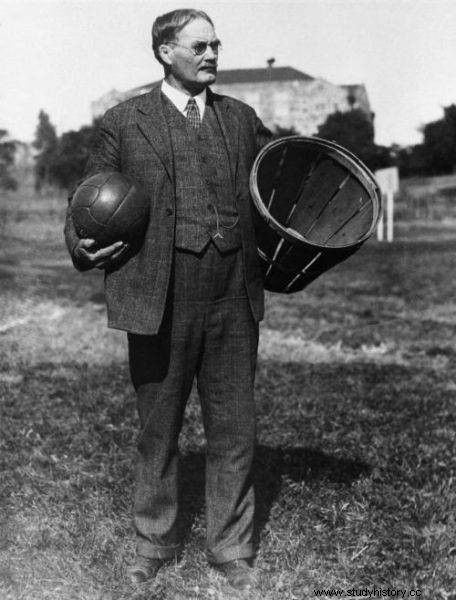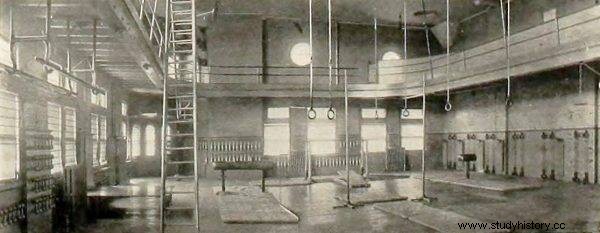Billions of fans, millions of players and hundreds of thousands of matches - this is what football, basketball and volleyball looks like today. It's hard to believe that the beginnings of these disciplines are associated with dirt, wicker baskets and cramped nineteenth-century gyms ...
For many years, football has been the most popular sport in the world. The exact number of people interested in football is of course unknown. However, there is some - estimated - data that around the globe it attracts four billion people to itself in different ways. The football market in Europe alone is worth nearly EUR 25 billion. These numbers can be overwhelming, especially since the history of football (and especially its origins) has little to do with this type of gigantism.
The first footballers in history were reportedly ... Chinese soldiers. Around 2500 BC. Huang Ti, known as the "Yellow Emperor", was to create a new game for his army that would allow the military to improve discipline, dexterity, and integrate with each other. The game called "cu ju" consisted of kicking a ball made of eight pieces of leather and stuffed with feathers or hair. There were no ritual elements in it. It was sport - entertainment in its purest form.
The Japanese had a completely different approach to their version of football. Their "Kemari" had a cult meaning. It also determined the social class and education, as only members of aristocratic families and priests could play. What was it about? Four to six men, dressed in alluring kimonos, formed a circle in which the ball was placed in the center. After a moment of reflection, the oldest player took it and kicked it upwards, while the others tried to keep it in the air as long as possible.
Over the next centuries, various versions of the football game were hosted, for example, in ancient Rome ("harpastum"), in the Maya, in Florence ("calcio"), in the Middle Ages in France and Great Britain. It wasn't until the 19th century that what we can call modern football was born. We owe it to the Brits who proudly call themselves the "fathers of football".
Made in United Kingdom
It's hard to believe that the origins of football were linked to dirt, stench and disease. In 1831, a cholera epidemic struck the British Isles, and contaminated rivers were one of the causes of the spread of the plague. Everything possible was thrown into the waters and poured out. Moreover, taking care of personal hygiene was not fashionable. These, and a few more (equally disastrous) habits, made the British sick and died too often. A chance to improve the situation was seen in physical activity. After all, sport is good for health!
After the aforementioned epidemic, a period of mental changes began in society. From year to year, more and more people kicking the ball appeared on the streets and squares of British cities. The first teams were also formed , assumed mainly by pupils or students. On October 24, 1857, in the small town of Sheffield, a group of Harrow boarding students founded the first soccer team, FC Sheffield. This event triggered an avalanche. Football clubs were established all over the country, and their founders were workers, railwaymen, and even ... religious groups.
The number of teams grew very rapidly. Unfortunately, along with it, the ambiguity of the rules of the game also increased. For example, some players during the matches allowed themselves to carry the ball with their hands (hence the rugby players come from), while others were against it. There were also, among others, court and goal dimensions, foul rules, or dress code.

The Royal Engineers team that played in the FA Cup Final in 1872, the first edition of the competition.
On October 26, 1863, in one of the London taverns, on the initiative of a certain Ebenezer Cobb Morley, representatives of twelve football clubs met and founded The Football Assciation - the first national football association. The group has also started work on standardizing the rules. Finally, on December 8, 1863, after seven meetings, an agreement was reached. So football had clubs, it had a federation, it had rules. In 1871 it also gained regular games.
From November 11, 1871 to March 16, 1872, fifteen teams competed in the first ever England FA Challenge Cup. The originator of the tournament was the football player and cricketer Charles William Alcock, and its winners were Wanderers, who in the final match at Kennington Oval defeated (1-0) Royal Engineers in the presence of almost two thousand fans. 1872 is also important for another reason:on November 30, the English faced the Scots - and it was the first meeting of the two national teams. Sixteen years later, the league games started.
The British were constantly improving the game. They introduced new regulations, for example the one on offside (1866), on the possibility of a goalkeeper catching the ball in the hands (1871), or on removing a footballer from the field (1877). A game constructed in this way began its journey. First across continental Europe and then all over the world.
Revolutionary and his peach baskets
At the end of the 19th century, another sports discipline, which is extremely popular today, was born. I'm talking about basketball. The game, which currently has around a billion fans, was invented by James Naismith, a Canadian doctor, pastor and teacher. It was December 21, 1891 when in the YMCA gym on Armory Street in Springfield, wicker baskets hung on balconies at a height of 305 centimeters, which were used every day to ... store peaches. Naismith, with the help of eighteen students divided into two teams of nine, presented his project to the audience.
The game was about throwing the ball into the baskets. The team that did it more times was the winner. The several-minute presentation was a complete success. Viewers were charmed by the new discipline. So the Canadian teacher started fine-tuning the details. Less than a month later, he published 13 rules of the game in the school newspaper. Springfield students showed it to their classmates. The next ones. In this way, the new sport gained new allies, and one of them - Frank Mahan - came up with a name for it:"basketball" (from the combination of the English words "basket" and "ball"). ).

Basketball was invented by James Naismith, a Canadian doctor, pastor and teacher.
The question remains:why did Naismith actually create basketball? Well, in 1891, the Springfield College Pedagogical Council organized a competition for a new game to help children and teenagers stay fit during the winter. In the summer there was no problem with that, as the sport could be practiced outdoors. But in winter there was a problem. Mr. James's project won, because it used a gym, contained a lot of jumping, running, and also developed motor coordination. And that he generated emotions at the same time? So much the better !.
In the USA, by the 1940s, about 30,000 school and university teams were established. In 1946, the National Association of Intercollegiate Basketball, or NBA for short, was founded. In Europe, basketball developed more slowly. The French were the first to fall in love with it, led by Baron Pierre de Coubertin. Perhaps it was thanks to his efforts that this little European sport was included in the program of the Olympic Games in Berlin (1936). It is also worth adding that the first game of basketball players at the Olympics was won by - who else - the Americans. The fourth place went to the Polish team, who had to recognize the Mexican superiority in the bronze match.
Tennis in the new version
Volleyball in Poland is a national sport associated with great successes. However, it is not a domestic invention. It came to the Vistula River from the other side of the ocean. In 1895, Mr. William George Morgan, a physical education teacher in Holyoke, Massachusetts, was earnestly looking for a new team sport for his students. It was supposed to increase not only physical fitness, but also teach logical thinking.
Morgan believed that tennis had such properties. So he modified this discipline:he raised the net to a height of 198 cm, replaced the rackets with his hands, and finally asked ten of his students to stand in equal teams of five to face each other. He ordered them to pierce the ball so that it would land on the opponents' side.
Initially, he did not gain any allies. The visionary knew what the problem was. The balls he used were not suitable for this type of competition and contact with her was painful. So he went to AG Spalding &Bros and, with the help of its employees, designed a new ball. It was covered with leather and weighed about 300 grams. Perfect - at least for starters.

In 1895, Mr. William George Morgan, a physical education teacher in Holyoke, Massachusetts, was earnestly looking for a new team sport for his students.
Having an almost ready project, he decided to invite professors and PE students from local schools to the "Mintonette" show, because that was what he called his sport. The first official volleyball match was played at the YMCA conference of physical education directors in Springfiel in 1896. Apparently, after seeing it, Dr. Afred Thompson Halsted approached Morgan and suggested that he call his game "volleyball" ("flying ball"). The delighted teacher agreed without hesitation.
The origins of volleyball and basketball are very similar. The same applies to the popularization of both disciplines. The ball was also played by Morgan's students and their friends first, then schools in other counties and states, until - in 1900 - Canadians started to do it, and then residents of Asia and South America. Members of the YMCA and American soldiers fighting during World War I brought "volleyball" to the Old Continent.
On April 18–20, 1947, the International Volleyball Federation (FIVB) was established during the Congress in Paris. Its first president was Paul Libaud. Interestingly, one of his deputies was a Pole - Zygmunt Nowak.
The three disciplines presented are constantly evolving. Along with the development of technology, further, often cosmetic changes are introduced to make the gameplay more attractive and fair. However, their foundations remain intact, and this is just proof that these 19th century sports inventions are brilliant. Timeless. The more it is worth knowing how it all started - and who is behind them.
